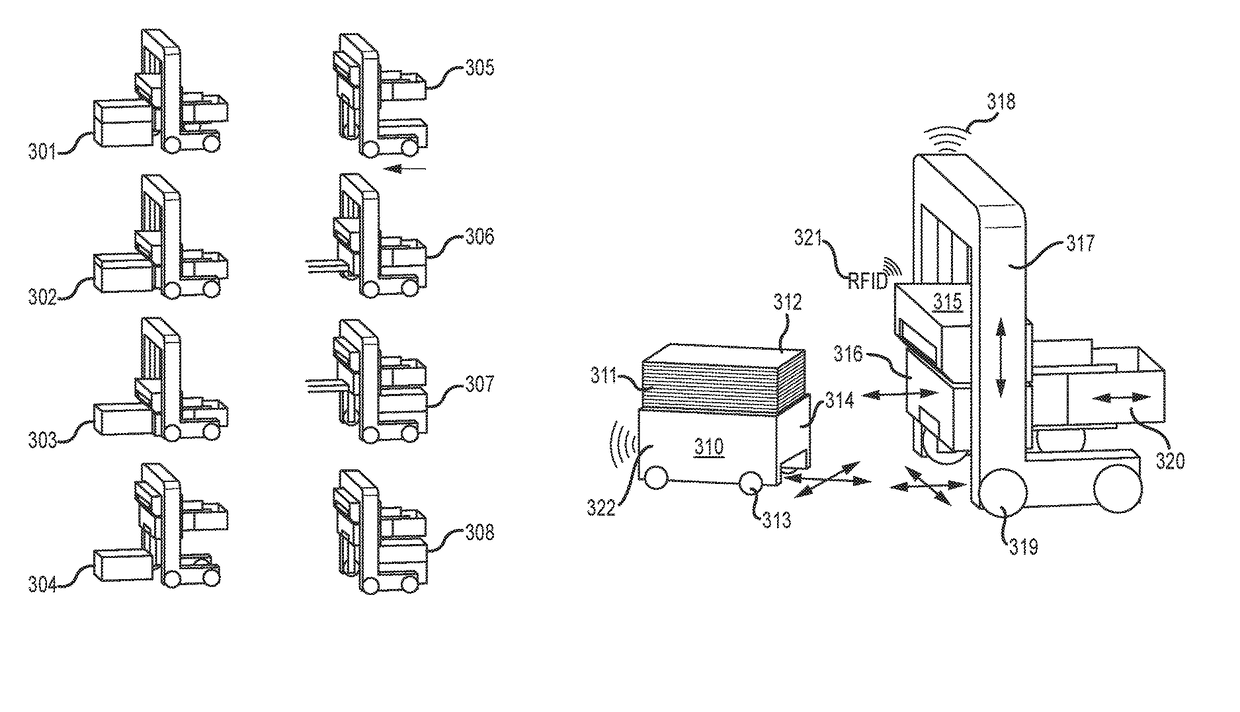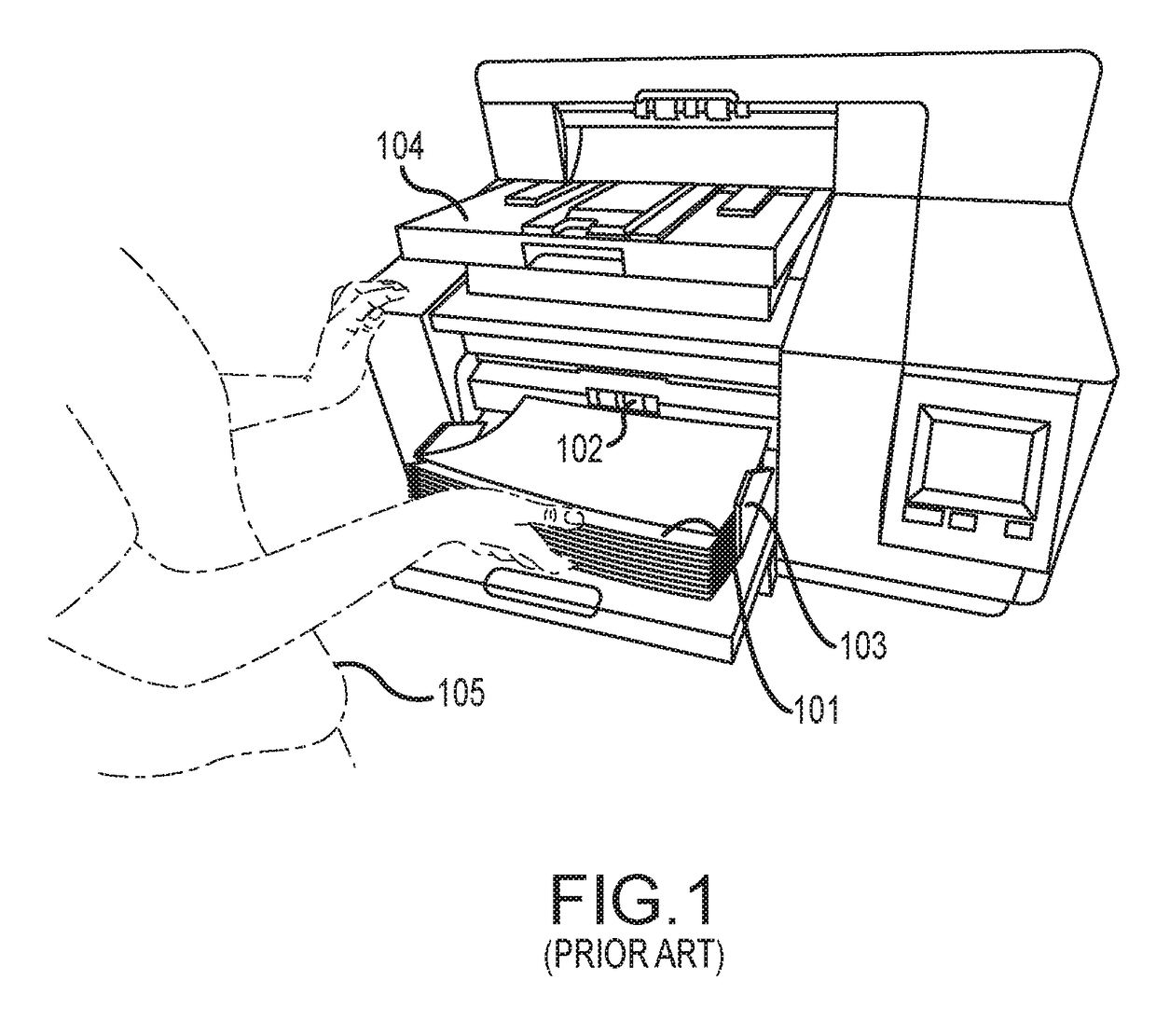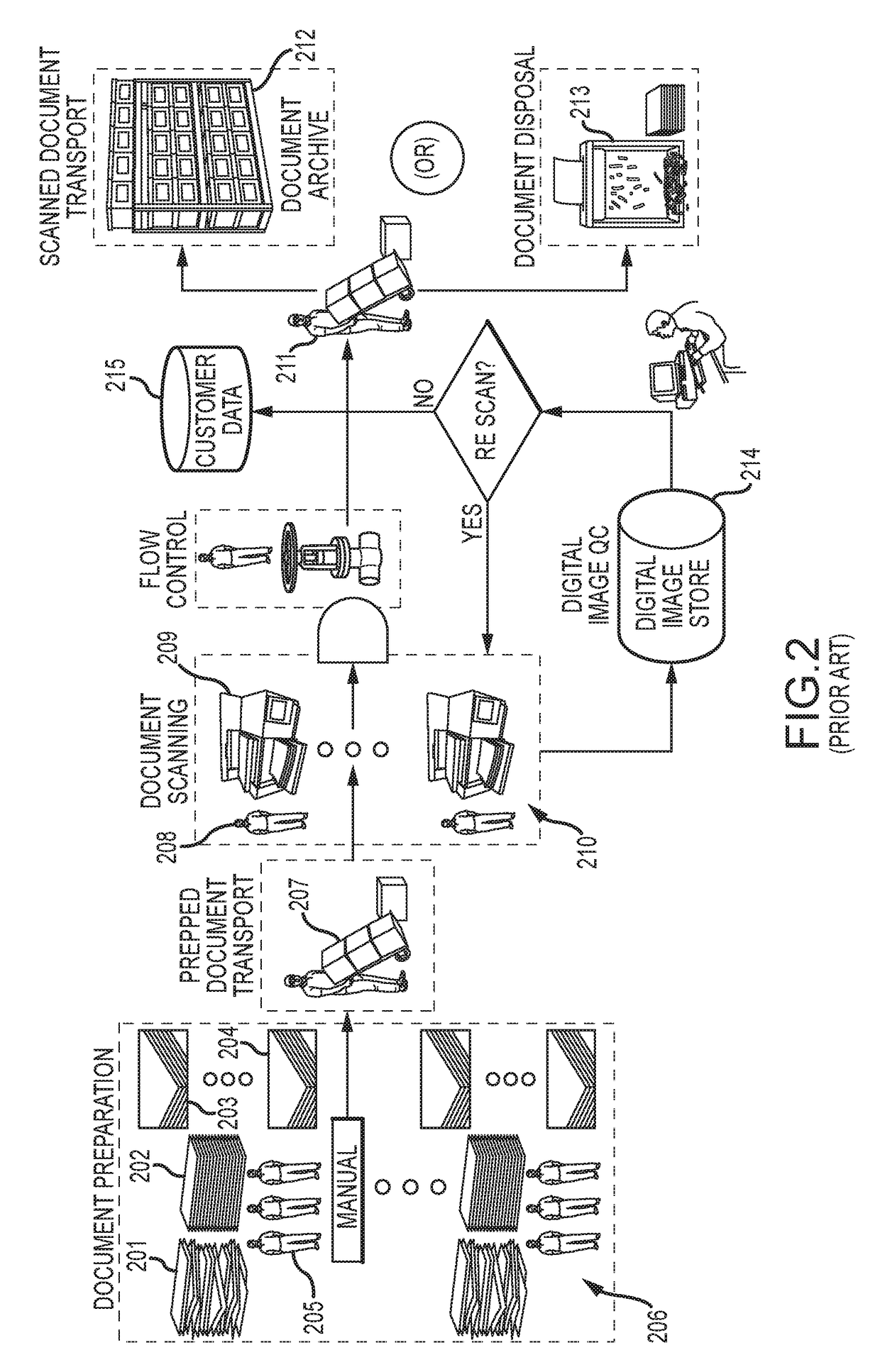Mobile autonomous scalable scanner system
a scanner system and autonomous technology, applied in the direction of digital output to print units, instruments, computing, etc., can solve the problems of increasing the cost of scaling the operation as it grows, requiring additional and expensive personnel, and large and expensive scanners used in traditional scanning operations. achieve the effect of reducing costs and increasing efficiency
- Summary
- Abstract
- Description
- Claims
- Application Information
AI Technical Summary
Benefits of technology
Problems solved by technology
Method used
Image
Examples
Embodiment Construction
[0019]The autonomous scanner system and method allow for efficient, reliable, and coordinated scanning of document stacks placed on designated document pads, tables, or other surfaces in a room. The autonomous scanners work at an optimal rate, which minimizes system cost and maximizes system reliability. The autonomous scanners digitize each page in the stacks, wirelessly transmit the resultant data to customer or operator processing systems 315, and advance to the next stack. This process continues in an unattended manner as depicted in 301-308 indefinitely, or until all available documents are digitized. Additionally, a central controller may be provided to communicate with the autonomous scanners and modify or update the scanning assignments, allowing document stacks to be added or removed during the scanning process.
[0020]Communication between the autonomous scanners and central controller managing the scanning operations may be done through wireless communications, such as WiFi...
PUM
 Login to View More
Login to View More Abstract
Description
Claims
Application Information
 Login to View More
Login to View More - R&D
- Intellectual Property
- Life Sciences
- Materials
- Tech Scout
- Unparalleled Data Quality
- Higher Quality Content
- 60% Fewer Hallucinations
Browse by: Latest US Patents, China's latest patents, Technical Efficacy Thesaurus, Application Domain, Technology Topic, Popular Technical Reports.
© 2025 PatSnap. All rights reserved.Legal|Privacy policy|Modern Slavery Act Transparency Statement|Sitemap|About US| Contact US: help@patsnap.com



